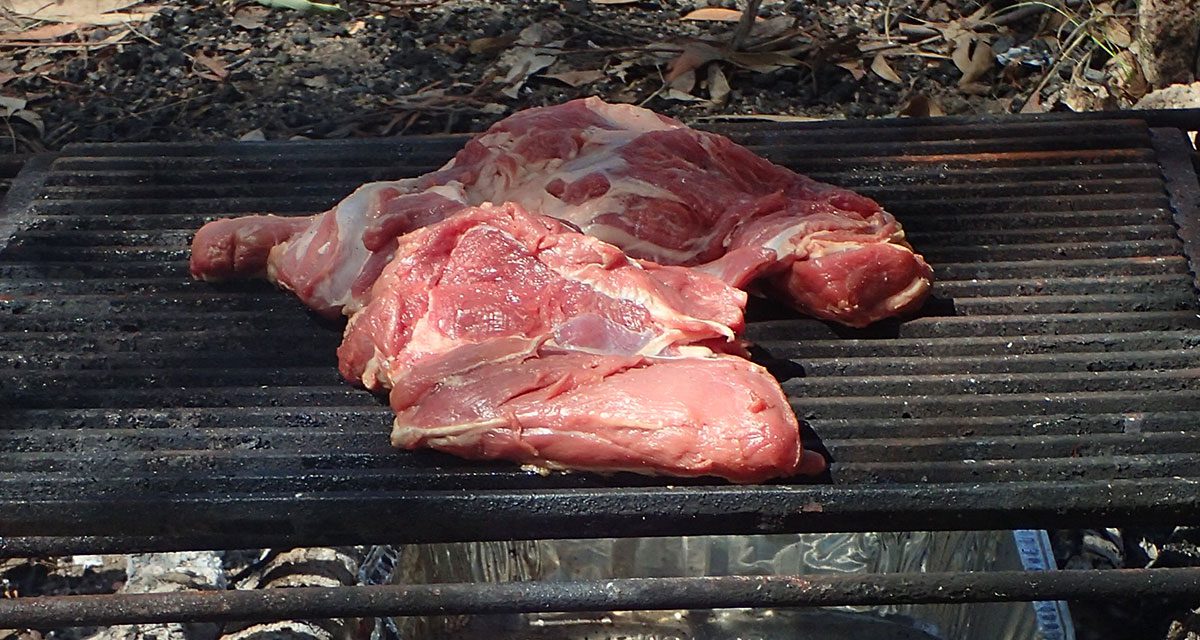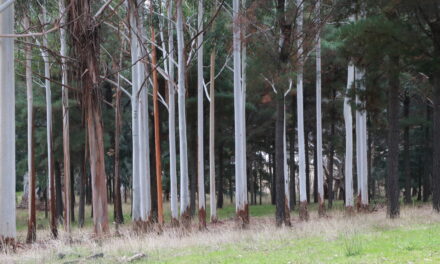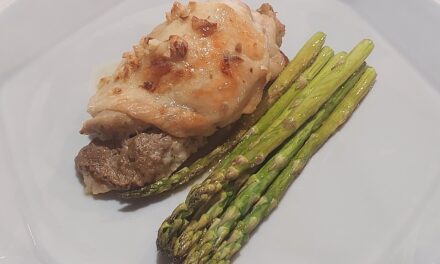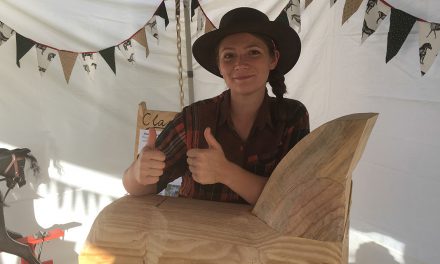The Small Farms butcher shop – run by Steve and Lynn Bain – keeps working away with that square cut. This month they take a look at the square cut shoulder flat roast as a boneless treat for the table.
A Square cut shoulder is a square shaped block of meat cut using a meat saw from the shoulder/forequarter area of a side of meat.
Last edition we trimmed the rib bones (and backbone) from the square cut shoulder; this edition we flip the same cut of meat over and remove the shoulder blade (AKA scapula) and arm bone (AKA humerus) to reveal a boneless flat roast.
The general plan is to locate the hinge joint between the blade bone (scapula) and the upper foreleg bone (humerus) and then cut away the top layer of meat over the joint and scapula thereby exposing the ‘v’ or triangular shaped scapula bone.
Next, using the point of your knife, cut around the edges of the scapula as well as underneath the bone in order to free the bone from the meat.
Please note there isn’t a bone to bone joint where the scapula meets the ribs; thus, with quadrupeds, the scapula is able to be removed from the rest of the forequarter by slicing along the flesh between the blade bone and the ribs.
Step One: Start with a squarish square cut shoulder (this image was taken before the ribs and spine were removed – in this case the ribs and backbone/spine were removed from this piece of meat in last month’s edition of Small Farms).
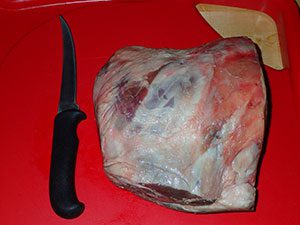
Step Two: This side on view of the square cut shoulder (image taken before the ribs and spine were removed) shows the end on view of the scapula/shoulder blade (also sometimes referred to as the blade bone).
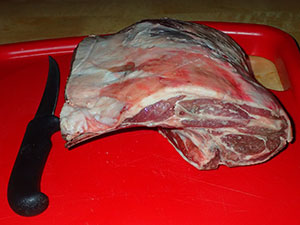
Step Three: Rotating the square cut shoulder 90 degrees, now we can see the cross section of the humerus (upper arm bone) at the location that the humerus was sawn through in order for the butcher to produce the square shaped shoulder cut. The tip of the knife points to the sawn cross section of the humerus.
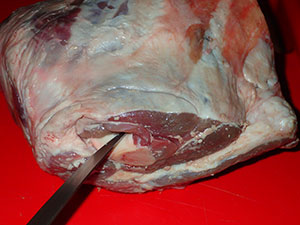
Step Four: Locate the ridge of the scapula (the ridge can be seen in the photo accompanying step nine) and cut down one side of the ridge. The ridge of the scapula is also sometimes referred to as the scapula’s spine.
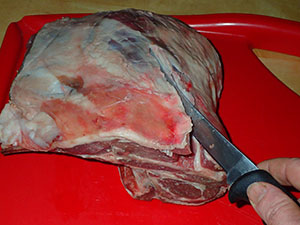
Step Five: Then cut down the other side of the ridge, you will only need to cut to a depth of around 10mm. Once you hit the flat bone of the top of the blade, twist your knife blade sideways, edge to the outside, and run your boning knife across the top of the bone and cut the flesh away from the scapula. Do this across the top of the blade bone on both sides of the scapula’s ridge.
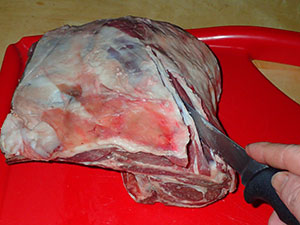
Step Six: With your knife, flat to the bone, cut outwards away from the ridge in order to cut the flesh away from one side of the scapula (AKA shoulder blade).
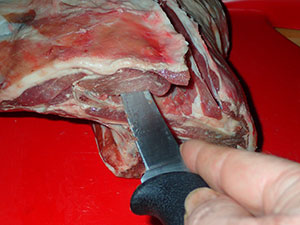
Step Seven: The meat has been cut away from both sides of the ridge bone above the shoulder blade; as well the meat has been cut away from the blade to humerus hinge joint (this joint is known as the omothoracic junction). The meat has also been flensed away from either side of the humerus so that all of the bones and the joint are exposed.
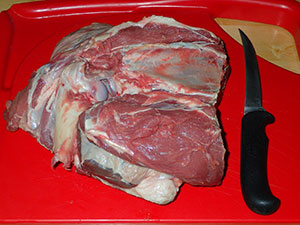
Step Eight: Using the knife’s blade length and taking advantage of the narrowness of the boning knife, cut underneath the shoulder blade in order to cut the bone away from the flesh. Also cut underneath the joint and also cut around and underneath the humerus so that the remaining “arm” assembly is separated from the shoulder flesh.
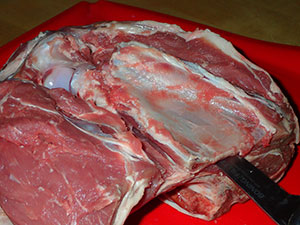
Step Nine: The scapula and part of the (sawn) humerus separated from the now boned (bone-out) shoulder roast (note the ridge of bone on the top of the scapula – when commencing the removal of the scapula, you’ll need to cut down either side of this centimetre high bone)
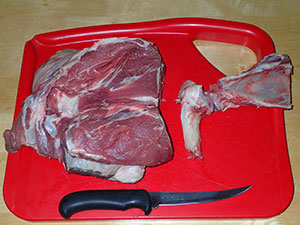
You now have a boned out flat roast ready for a slow cooking or slow roasting recipe.

